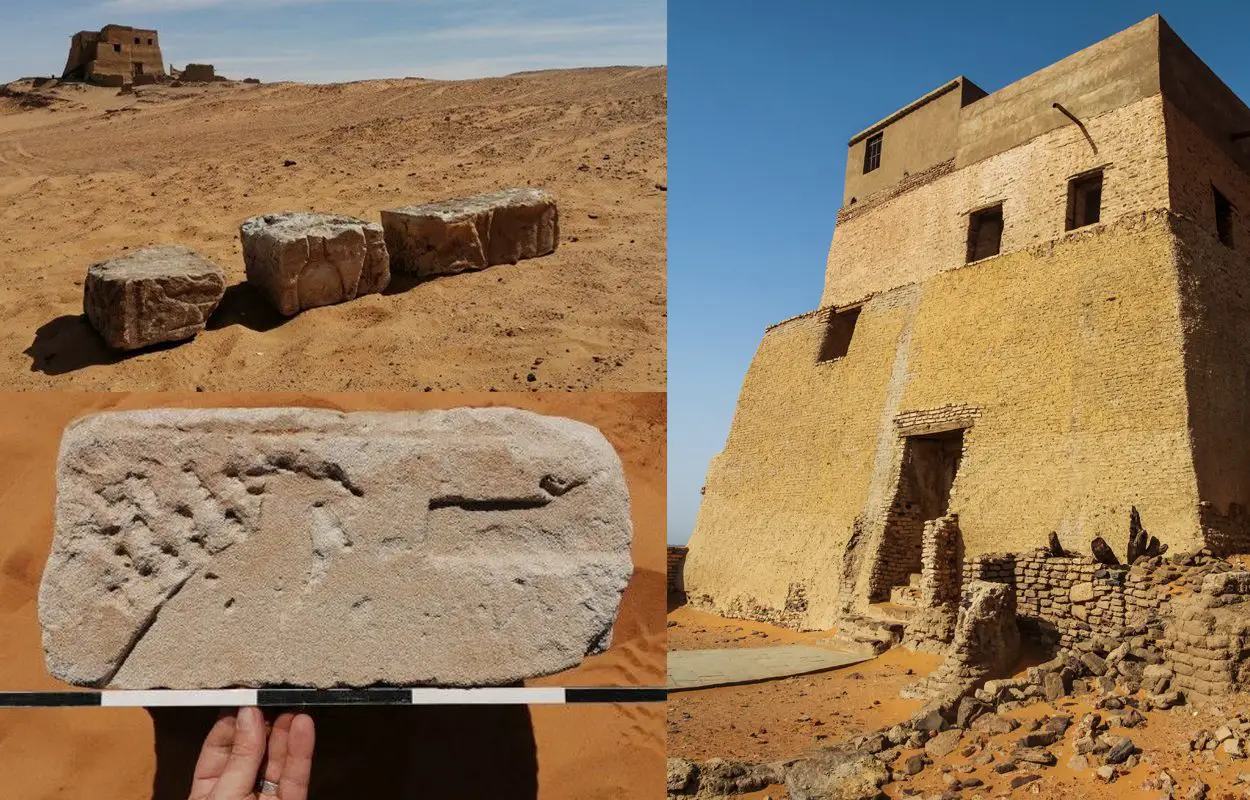Ancient Egyptian discovery rewrites history of Sudanese kingdom
Polish archaeologists excavating at the ruins of Old Dongola in Sudan have discovered Ancient Egyptian hieroglyphics inscribed on sandstone blocks.
Old Dongola was the capital of the Nubian kingdom of Makuria, located on the eastern banks of the River Nile in Northern Sudan.
The Kingdom of Makuria emerged during the 5th century AD following the collapse of the Nubian Kingdom of Kush. At its peak during the 9th–11th century AD, the kingdom stretched from the area along the Nile from the Third Cataract, to south of Abu Hamad, and parts of northern Kordofan.
The kingdom saw cultural and religious reforms, referred to as "Nubization", that sought to counter the growing influence of Arabic in the Coptic Church, and introduced the cult of dead rulers and bishops, as well as indigenous Nubian saints.

Recent excavations at Old Dongola have uncovered over 100 blocks of white sandstone, inscribed with Ancient Egyptian hieroglyphics from the period of the 25th dynasty of Egypt, also known as the Nubian Dynasty.
The 25th dynasty was a line of pharaohs who originated in the Kingdom of Kush that reigned in part or all of Ancient Egypt for nearly a century, from 744 to 656 BC. The 25th Dynasty's reunification of Lower Egypt, Upper Egypt, and Kush, created the largest Egyptian empire since the New Kingdom. They assimilated into society by reaffirming Ancient Egyptian religious traditions, temples, and artistic forms, while introducing some unique aspects of Kushite culture.
The blocks found at Old Dongola were originally part of a structure, possibly a temple, built in the first half of the 1st millennium BC, the earliest example of human activity on the site identified so far.
Egyptologist Dr. Dawid F. Wieczorek said: "This is a huge discovery, because despite the 60-year Polish archaeological presence in Old Dongola, no evidence of such early construction activity on the site has been identified so far. It is impossible to say whether this material is local or was brought from some other site. Nevertheless, it is surprising that there are so many of these blocks, and from different parts it seems of the same temple."
Some of the blocks are from the flooring, outer walls, and from a pylon (a tower flanking the entrance to the temple). "This would push back the known history of this city by over 1000 years," said Dr. Wieczorek.
Within a radius of more than 100 kilometres from Old Dongola, there are no other known examples of sites with Egyptian-style architecture. The closest are Gebel Barkal (about 150 km up the Nile), and Kawa (about 120 km down the Nile). Both were leading urban and religious centres established during the New Kingdom in the 16th and 14th centuries BC.
Header Image Credit : Dr. Dawid F. Wieczorek
-- Sent from my Linux system.
No comments:
Post a Comment